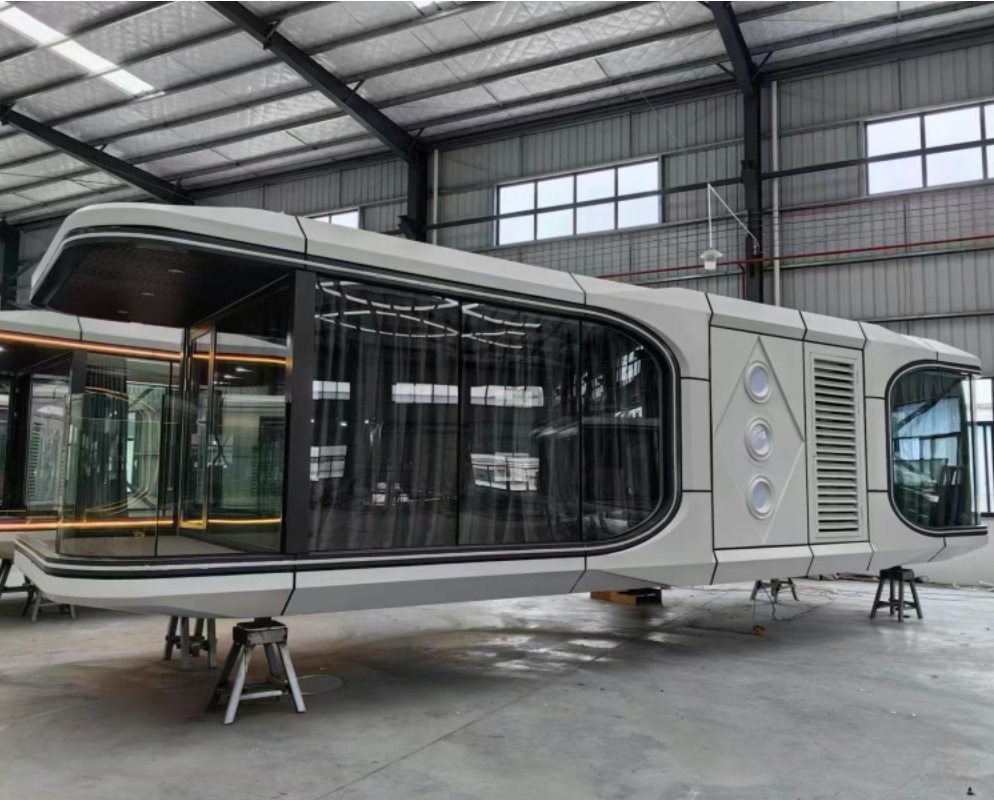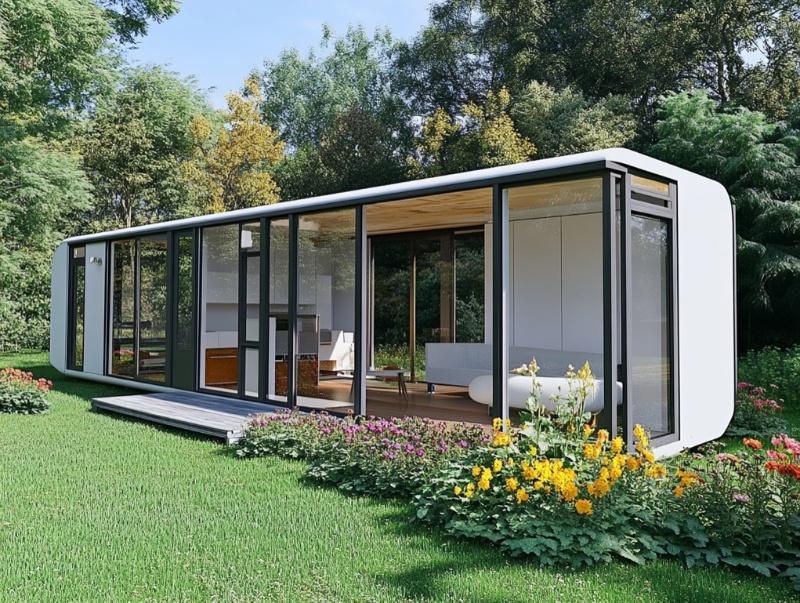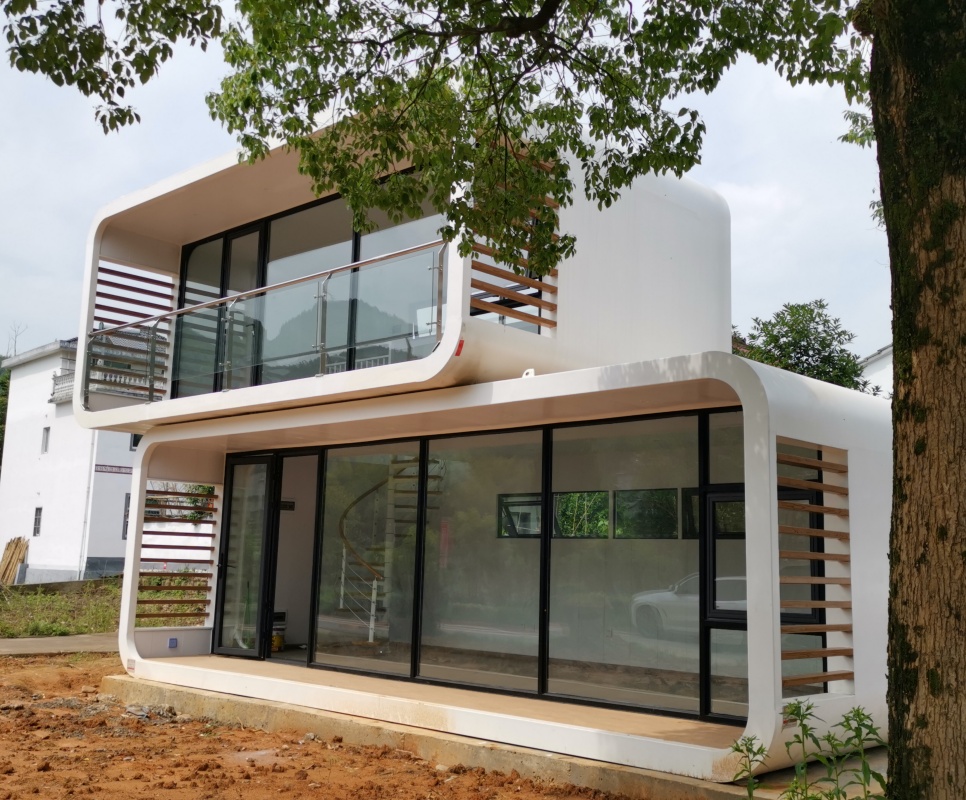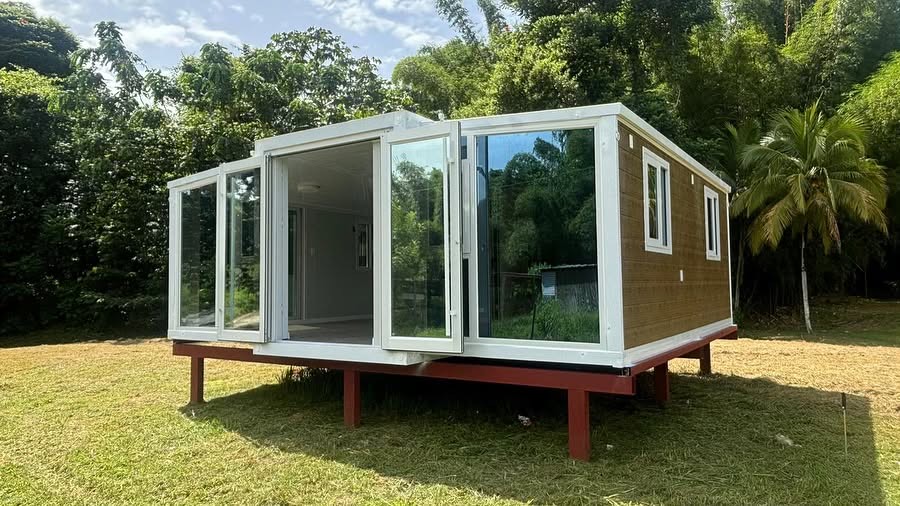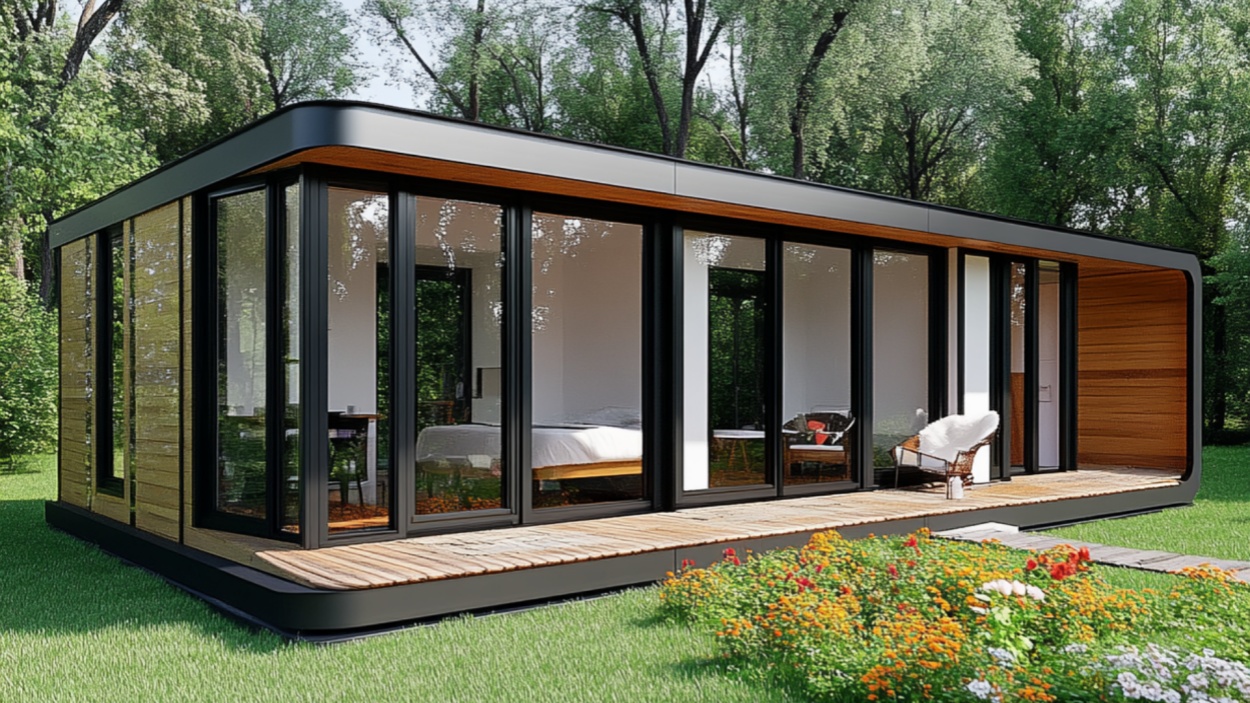Blog
Container Art Installations: Transforming Shipping Boxes into Urban Landmarks
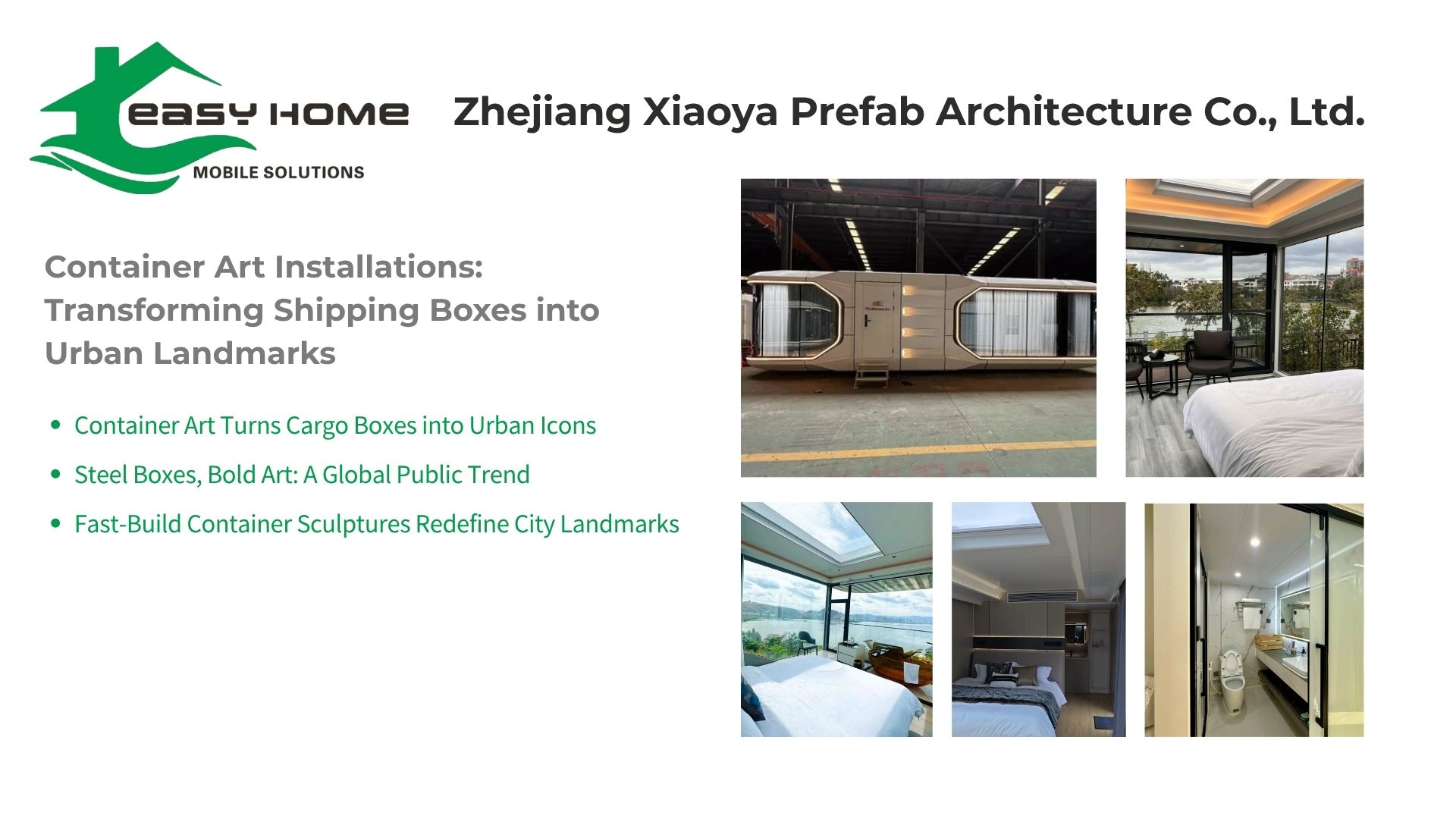
Table of Contents
-
Introduction: From Cargo Box to Cultural Beacon
-
Global Wave of Container Art
-
Signature Case Studies
3.1 SpY’s Golden “Totem” in Lille, France
3.2 Kansas City’s “IOU Structure”
3.3 Antwerp’s MAS “Red Star Line” Stack
3.4 London’s Pop‑Up Festival Pavilions -
Why Containers? Mobility, Scale, and Cost
-
Sustainability: Upcycling Steel into Art
-
Design & Engineering Considerations
-
Interactive Tech: Light, Sound, XR & Beyond
-
Economic Impact on Cities & Events
-
Partnering with Artists, Sponsors, and Fabricators
-
EasyPrefab’s Turn‑Key Support for Art Builds
-
Regulatory & Safety Checklist
-
Future Outlook: Container Art as Mainstream Public Sculpture
-
Conclusion: Steel Boxes, Endless Creativity
1. Introduction: From Cargo Box to Cultural Beacon
Shipping containers—symbols of global trade—are being reborn as giant canvases and modular sculptures. Artists and cities have discovered their industrial beauty, structural strength, and logistical simplicity. With cranes or forklifts, a stack of boxes can turn a dull square into an Instagram‑worthy landmark overnight, capturing public imagination and driving foot traffic.
2. Global Wave of Container Art
Over the last decade, container installations have appeared at world expos, music festivals, biennials, and city plazas:
-
Belgium hosts the annual Antwerp Port Festival, featuring illuminated container towers.
-
France’s Lille3000 cultural season commissioned SpY’s golden stack.
-
USA: Coachella, Art Basel Miami, and Burning Man have all rented container stages or pavilions.
-
Australia & New Zealand repurpose coastal port containers for light shows and indigenous art storytelling.
This global adoption signals that container art has matured from niche experimentation to a recognized public‑art genre.
3. Signature Case Studies
3.1 SpY’s Golden “Totem” – Lille, France
Spanish street‑art icon SpY vertically stacked 14 bright‑gold containers on a Lille boulevard in 2023. The 40‑metre tower resembled a mythical totem, confronting viewers with questions of scale, value, and consumer capitalism. Its mirrored gold cladding reflected city lights at night, becoming a selfie magnet and cultural talking point for Lille3000’s “Utopia” theme season.
3.2 “IOU Structure” – Kansas City, Missouri
Designed for Open Spaces KC, the red‑white‑blue “IOU Structure” spelled “USA” with staggered boxes, referencing national debt and civic responsibility. The work doubled as a public stage and lecture venue, blending art with political dialogue.
3.3 MAS Museum Stack – Antwerp, Belgium
Outside the Museum aan de Stroom, a permanent stack of red containers forms a lighthouse‑like marker symbolizing Antwerp’s maritime heritage. LED lighting sequences narrate migration stories tied to the Red Star Line shipping routes.
3.4 London Pop‑Up Festival Pavilions
London Design Festival has repeatedly used containers to create pop‑up galleries along the Thames—complete with augmented‑reality murals and VR portals—demonstrating the format’s adaptability to temporary cultural events.
4. Why Containers? Mobility, Scale, and Cost
| Advantage | Detail |
|---|---|
| Fast deployment | Crane‑ready modules allow overnight builds—perfect for festivals. |
| Structural strength | ISO containers handle wind loads; easy to stack < 9 units. |
| Cost‑effective | Used 20 ft units start at ~ US$2,000; far cheaper than custom steel frames. |
| Mobile & reusable | After an event, units can be shipped elsewhere, cutting waste. |
| Instant industrial aesthetic | Corrugated steel invites bold color, projection mapping, and murals. |
Traditional public sculptures often require months of fabrication; container art compresses timelines to weeks.
5. Sustainability: Upcycling Steel into Art
Millions of retired containers sit idle in ports. Transforming them into art:
-
Extends service life by 20–30 years with minimal re‑welding.
-
Avoids smelting emissions of new steel.
-
Encourages circular economy messaging—audiences see waste reimagined as beauty.
Green credentials help artists secure grants and corporate sponsors aligned with ESG goals.
6. Design & Engineering Considerations
-
Structural analysis: Ensure wind and seismic stability, especially for > 3‑high stacks.
-
Surface prep: Sandblasting & primer before murals or cladding.
-
Corrosion control: Marine‑grade paints or corten treatments for coastal sites.
-
Foundations: Concrete pads, twist‑lock footings, or ballast frames.
-
Public safety: Guardrails, anti‑climb mesh, fire ratings (BS 476, NFPA 601).
Collaborating with structural engineers early prevents costly redesigns.
7. Interactive Tech: Light, Sound, XR & Beyond
Containers’ flat interiors become black‑box theaters for:
-
Projection mapping onto corrugations (creates lively texture).
-
LED matrices fitted inside cut‑out logos.
-
Immersive audio chambers using steel resonance.
-
AR filters unlock digital layers for smartphone visitors.
SpY’s Lille tower used hidden uplights that shifted hues hourly, while Coachella’s “Spectra” tower incorporated a spiral LED ramp.
8. Economic Impact on Cities & Events
Case‑study ROI metrics:
-
Lille’s “Totem” drew > 500,000 visitors in five months, boosting cafés by 18 % sales.
-
Antwerp’s MAS stack features in 70 % of tourist social‑media posts (city tourism bureau, 2024).
-
Temporary container galleries at Art Basel gross US$1.2 M in artwork sales over four days.
Short build times and viral visuals translate to immediate tourism revenue.
9. Partnering with Artists, Sponsors, and Fabricators
Successful projects unite:
-
Artist vision – concept, story, community relevance.
-
Fabricator & logistics partner – container supply, modifications, crane work.
-
Sponsor or municipality – permits, funding, marketing.
EasyPrefab House often acts as step 2, offering design‑for‑manufacture, paint, cut‑outs, and global freight.
10. EasyPrefab’s Turn‑Key Support for Art Builds
-
Inventory: New/used 20 ft, 40 ft, HC, open‑top boxes.
-
Custom mods: Doors, cut‑outs, glass walls, welded frames.
-
Finish options: Powder‑coat, weathering‑steel, mirrored cladding.
-
Rapid shipping: 25–35 days port‑to‑port to EU/US.
-
On‑site services: Crane booking, stacking, secure twist‑locks.
Artists love a single vendor that handles steel, paint, and freight.
11. Regulatory & Safety Checklist
| Region | Key Codes | Typical Requirement |
|---|---|---|
| USA | IBC, NFPA | Structural calc, flame‑spread rating, guardrails above 30 in. |
| EU | Eurocode 3 | Wind loads, public egress width, CE marking on mods. |
| UK | CDM 2015 | Site safety plan, temporary‑works sign‑off. |
| AUS | NCC 2022 | Structural cert, cyclone tie‑downs in coastal zones. |
Early engagement with city planning reduces approval delays.
12. Future Outlook: Container Art as Mainstream Public Sculpture
-
Festival circuits will rent traveling container exhibits.
-
Smart‑city initiatives will commission interactive data‑visualization towers.
-
Corporate ESG branding will fund green container art in HQ plazas.
-
Hybrid retail‑art pods will merge galleries with pop‑up shops.
As steel boxes proliferate, expect more daring geometry—cantilevers, rotating stacks, AI‑mapped light shows.
13. Conclusion: Steel Boxes, Endless Creativity
Container art installations harness mobility, modularity, and sustainability to create dramatic statements in record time. Whether it’s SpY’s gleaming “Totem” or Kansas City’s provocative “IOU,” these works prove that humble freight boxes can become cultural icons. With expert partners like EasyPrefab, turning cargo leftovers into public‑space masterpieces has never been easier—or more impactful.
Pls check www.easyprefabhouse.com and send inquiry to dzswb@hzxiaoya.com




